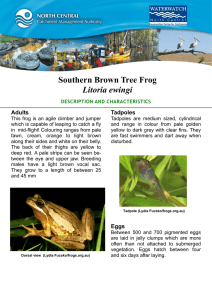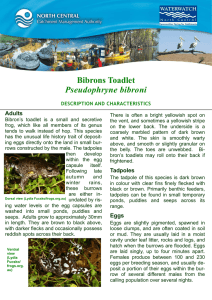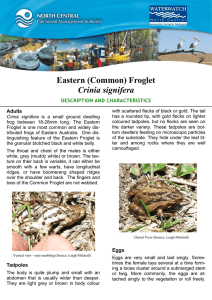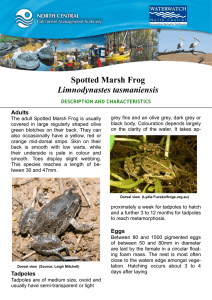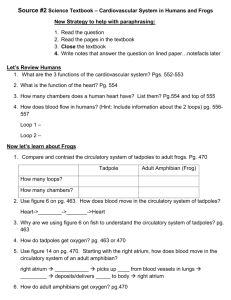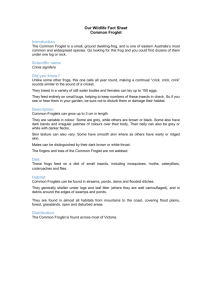Victorian Smooth Froglet Geocrinia victoriana Adults Tadpoles
advertisement
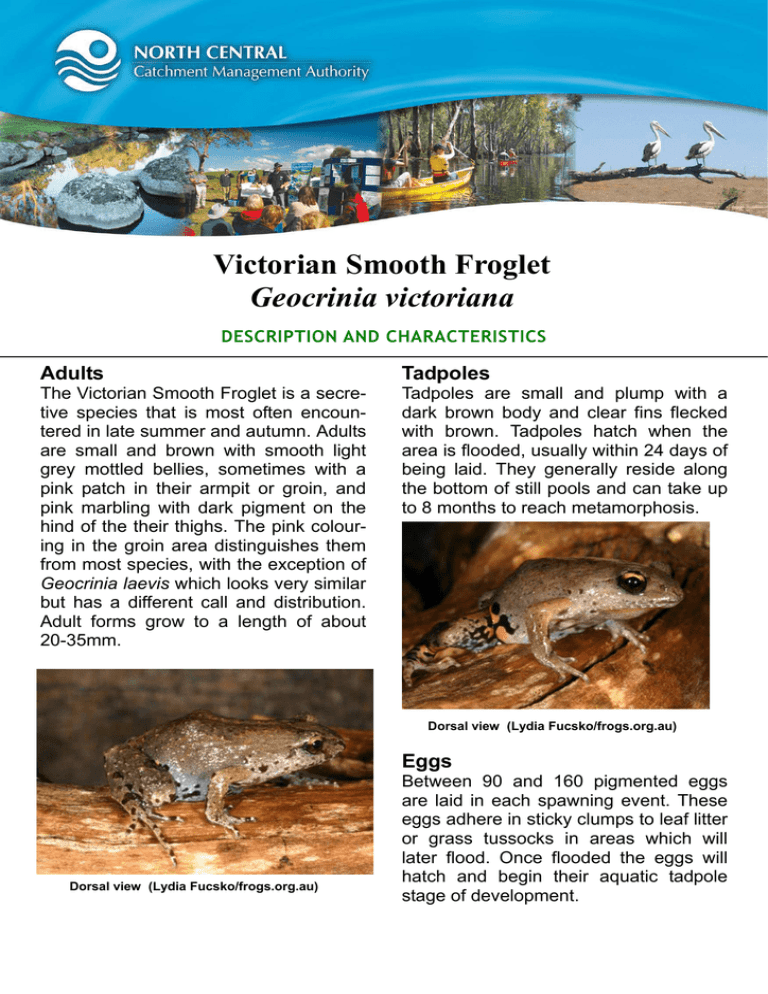
Victorian Smooth Froglet Geocrinia victoriana DESCRIPTION AND CHARACTERISTICS Adults Tadpoles The Victorian Smooth Froglet is a secretive species that is most often encountered in late summer and autumn. Adults are small and brown with smooth light grey mottled bellies, sometimes with a pink patch in their armpit or groin, and pink marbling with dark pigment on the hind of the their thighs. The pink colouring in the groin area distinguishes them from most species, with the exception of Geocrinia laevis which looks very similar but has a different call and distribution. Adult forms grow to a length of about 20-35mm. Tadpoles are small and plump with a dark brown body and clear fins flecked with brown. Tadpoles hatch when the area is flooded, usually within 24 days of being laid. They generally reside along the bottom of still pools and can take up to 8 months to reach metamorphosis. Dorsal view (Lydia Fucsko/frogs.org.au) Eggs Dorsal view (Lydia Fucsko/frogs.org.au) Between 90 and 160 pigmented eggs are laid in each spawning event. These eggs adhere in sticky clumps to leaf litter or grass tussocks in areas which will later flood. Once flooded the eggs will hatch and begin their aquatic tadpole stage of development. LIFE CYCLE AND MATING CALL Males of this species are usually found calling amongst moist leaf litter and grass tussocks near water in low areas, which will become flooded at a later date. Their call has a long and harsh introductory note which is followed by a long series of short rapidly repeated explosive musical notes- “wa-a-a-a-a-ark-pip-pip-pip-pippip-pip…..”. Calling can be heard almost year round, but particularly between January and May. Breeding season extends from November to May. Hatching of eggs can be delayed for up to four months in dry periods. Life History Cycle (Source: www.frogs.org.au) HABITAT AND DISTRIBUTION The Victorian Smooth Froglet can be found in a wide range of moist areas ranging from rainforests through to wet and dry forests, woodlands, shrublands, grasslands and alpine bogs. Their eggs are terrestrial and are spawned in moist leaf litter and grass tussocks in areas that will be later flooded. Tadpoles of this species are aquatic and can be found in dams, flooded ditches and ponds. Victorian Distribution (Source: www.frogs.org.au) IMPORTANCE AND POTENTIAL THREATS The Victorian Smooth Froglet is not listed under the Flora and Fauna Guarantee Act 1988 as a threatened species. At this point in time population size and distribution seem to be unchanging. Possible threatening processes include: inappropriate catchment management which causes a decline in the condition of water quality or eutrophication of waterways; the use of herbicides and insecticides; and habitat modification which removes vegetation and introduces weed species.
